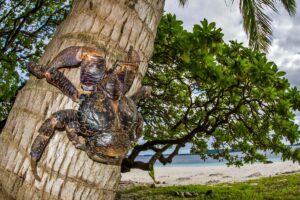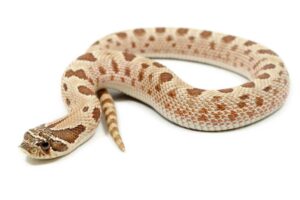Wildlife plays a crucial role in maintaining the balance of our ecosystem. However, many species are now facing extinction due to various reasons such as habitat loss, poaching, over-exploitation, and climate change.
The extinction of a single species can have a ripple effect on the entire ecosystem. Hence, it is important that we take action to protect these endangered wild animals.
In this article, we will discover the top 10 endangered wild animals and learn about their habitat, conservation efforts, and why they are facing extinction.
Table of Contents
1. Bengal Tiger
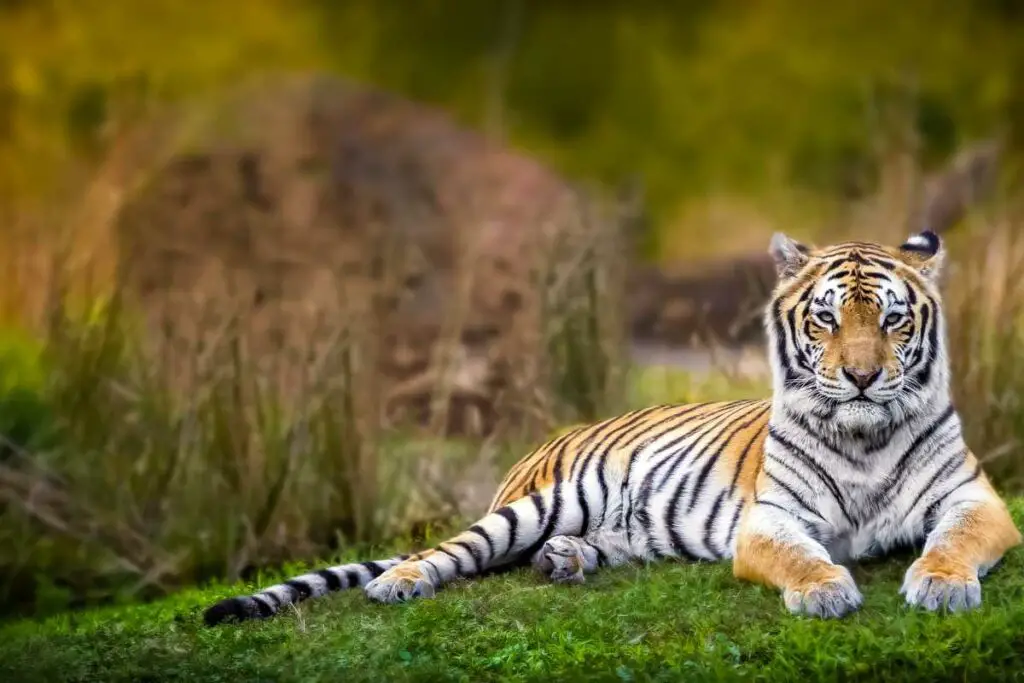
The Bengal Tiger is a magnificent species native to India and other countries in Southeast Asia. These tigers are listed as endangered due to poaching, habitat loss, and distruction on their natural enviroment.
The Bengal Tiger population has declined by more than 70% over the past 70 years, and it is estimated that there are only 2,500 individuals left in the wild. Conservation efforts are underway to protect these magnificent creatures and their habitats.
2. African Elephant
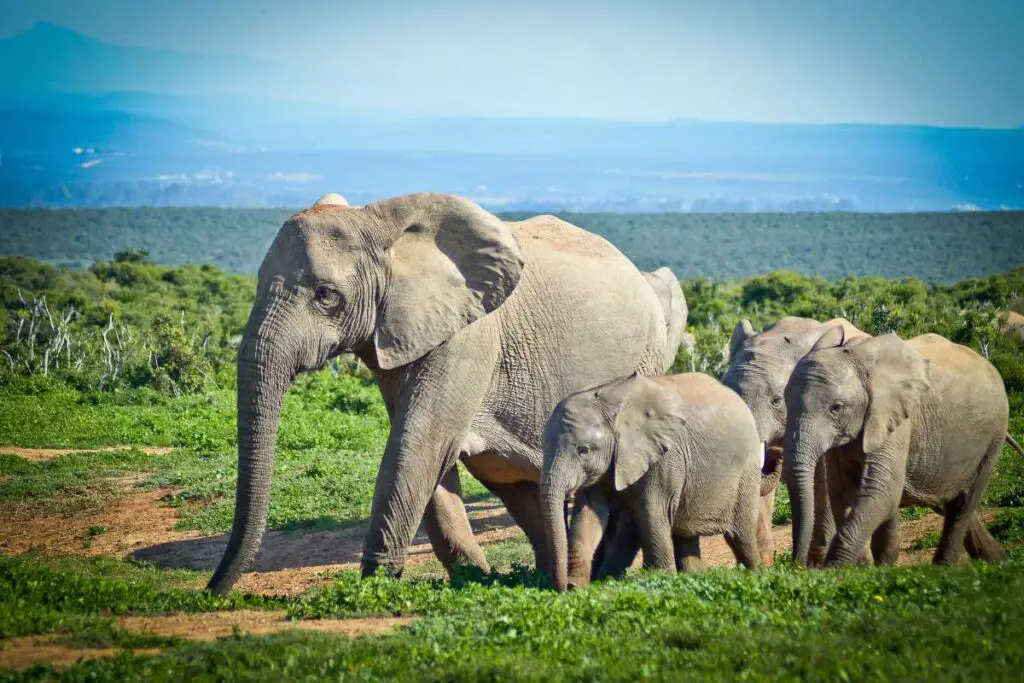
The African Elephant is the largest land mammal and is native to Africa. These magnificent creatures are facing extinction due to habitat loss, hunted and killed for their Ivory and poaching.
The African Elephant population has declined by more than 70% over the past 70 years, and it is estimated that there are only 400,000 individuals left in the wild. Conservation efforts are underway to protect these elephants and their habitats.
3. Mountain Gorilla
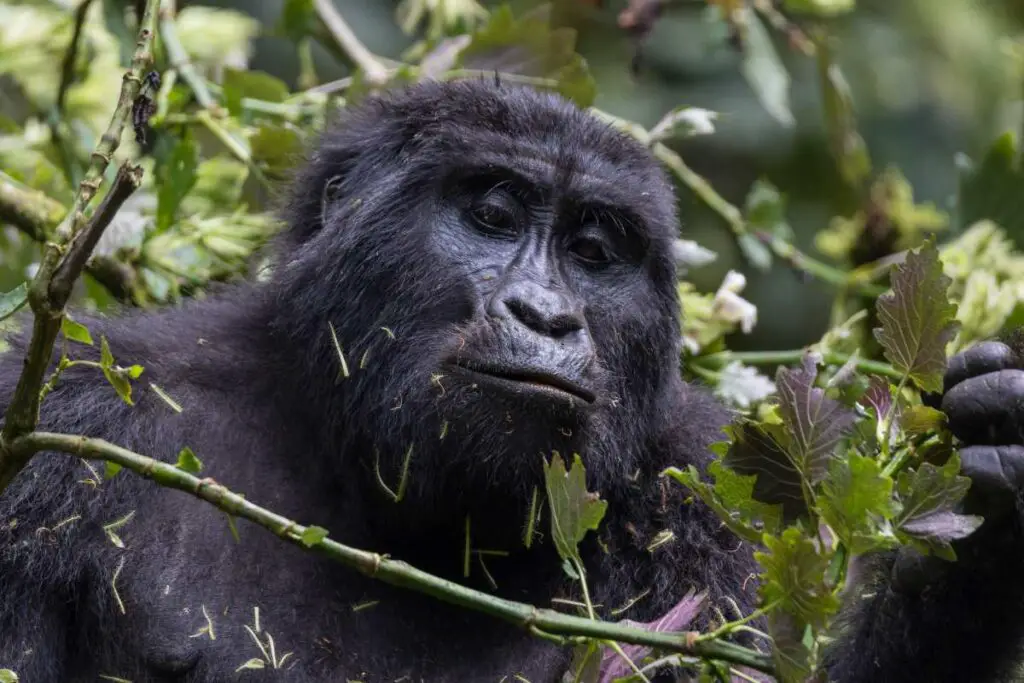
The Mountain Gorilla is a critically endangered species that is native to the mountains of East and Central Africa. These gorillas are facing extinction due to spawning, habitat loss, and poaching.
The Mountain Gorilla population has declined by more than 70% over the past 70 years, and it is estimated that there are only 1,000 individuals left in the wild. Conservation efforts are underway to protect these gorillas and their habitats.
4. Western Lowland Gorilla
The Western Lowland Gorilla, a native of West and Central Africa’s lowland forests, is a critically endangered species. Its population has plummeted by over 70% in the past 70 years, with only an estimated 100,000 individuals remaining in the wild.
The gorillas’ imminent extinction is primarily due to habitat loss and poaching. Conservation initiatives aim to safeguard the gorillas and their natural habitats.
5. Amur Leopard

The Amur Leopard, native to the Russian Far East and China, is a critically endangered species. With a population decline of over 70% in the past 70 years, only an estimated 70 individuals remain in the wild.
These leopards have distinctive physical characteristics, including a thick fur coat that ranges from light yellow to reddish-brown in color and is marked with large, widely spaced black spots. Their habitat is primarily made up of forested areas and mountainous regions near the Amur River.
The major threat to the survival of the Amur Leopard is habitat loss and fragmentation due to human activities such as deforestation and conversion of land for agriculture. Poaching for their fur is also a significant problem, and the small population size of the leopards makes them vulnerable to genetic problems and diseases.
Conservation efforts for the Amur Leopard include habitat protection and restoration, anti-poaching initiatives, and breeding programs to increase the population size. These efforts are crucial for the survival of this unique and threatened species.
6. Snow Leopard
The Snow Leopard is a big cat native to the high mountain ranges of Central Asia, including the Himalayas, Tien Shan, and Pamir Mountains.
It is known for its distinctive appearance, including a thick fur coat that ranges from gray to white in color and is marked with large, irregularly-shaped black spots.
Snow Leopards are apex predators that occupy a unique and challenging habitat, living at high elevations of up to 18,000 feet.
They feed mainly on wild sheep and goats, and have adapted to their harsh environment by developing powerful hind legs for leaping and large paws with fur on the undersides to help them navigate the snowy terrain.
Unfortunately, Snow Leopard populations have declined significantly due to human activities such as habitat loss, Poaching for their fur and bones is also a major threat, and their small population size makes them vulnerable to genetic problems and diseases.
Conservation efforts for Snow Leopards include habitat protection, anti-poaching initiatives, and community-based programs to reduce human-wildlife conflict.
These efforts aim to ensure the survival of this magnificent species and maintain the delicate balance of the high mountain ecosystems they inhabit.
7. Orangutan
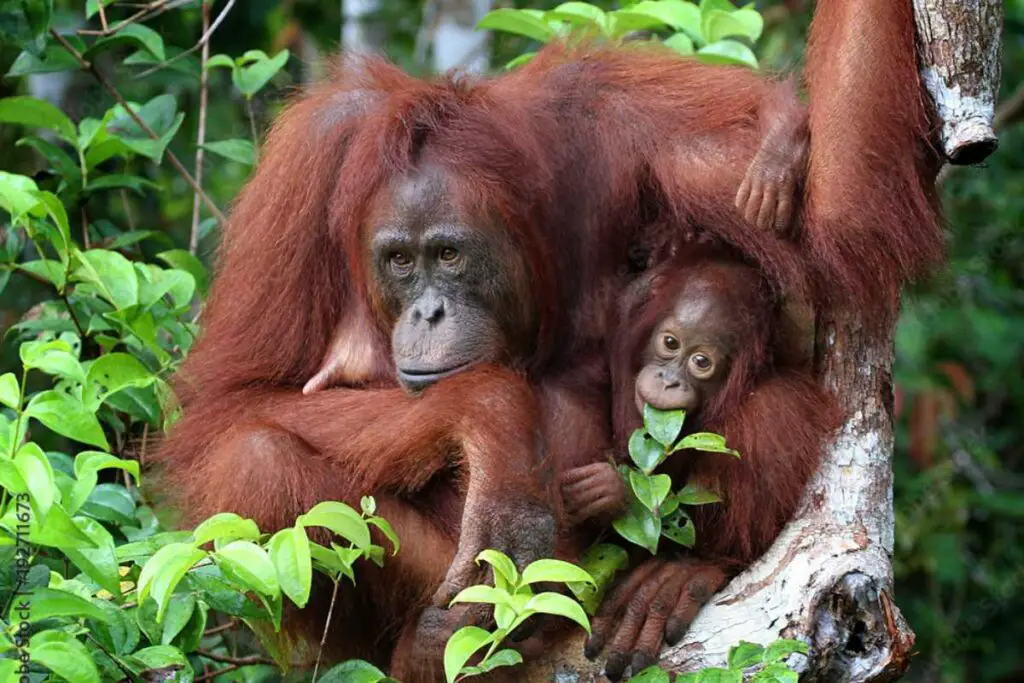
The Orangutan is a critically endangered species native to the rainforests of Borneo and Sumatra in Indonesia.
They are facing extinction due to habitat loss and degradation caused by human activities such as deforestation, conversion of land for agriculture, and the illegal pet trade.
The loss of their natural habitat has fragmented the Orangutan population, reducing genetic diversity and making them vulnerable to diseases and inbreeding. In addition, hunting and poaching also pose a significant threat to their survival.
Conservation efforts are underway to protect the remaining Orangutan population and their habitat. This includes efforts to combat deforestation, protect and restore their natural habitats, and promote sustainable agriculture and logging practices.
Breeding and rehabilitation programs are also underway to help increase the population size and improve their chances of survival.
It is crucial that we act now to protect the Orangutan and their habitat, as they play a vital role in maintaining the health and diversity of the rainforest ecosystem and provide important insights into the evolution of human behavior.
8. Javan Rhinoceros
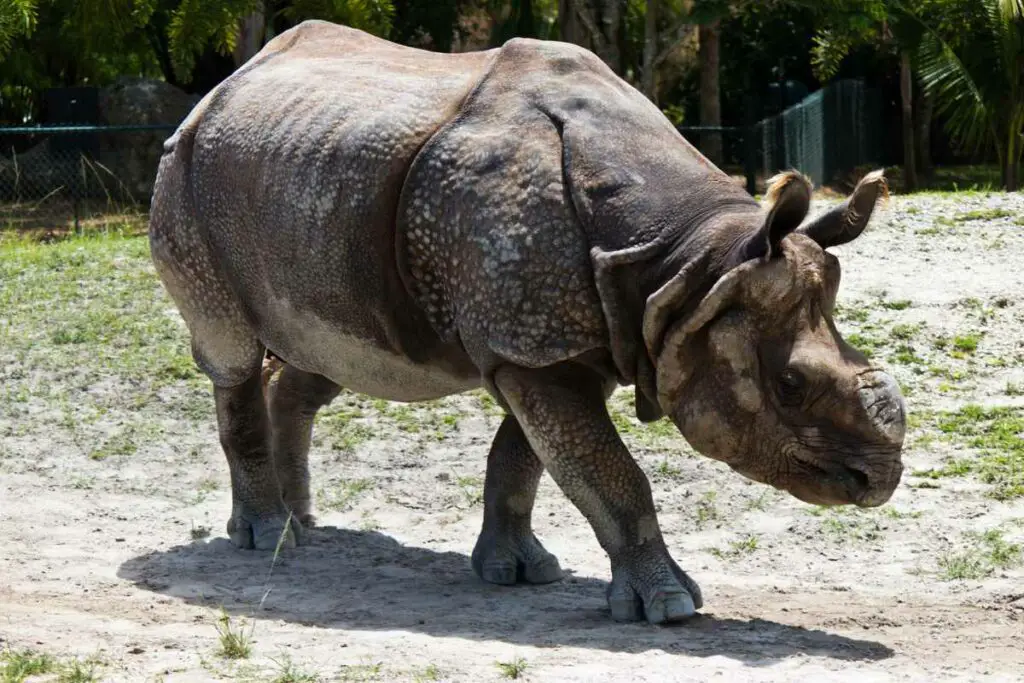
The Javan Rhinoceros is a critically endangered species found in the rainforests of Java, Indonesia and possibly Vietnam. This species has suffered a drastic population decline due to habitat loss, poaching, and poaching.
Javan Rhinos have also been heavily hunted for their horns, which are highly valued in traditional Asian medicine. This demand for rhino horn has made them a target of poaching and poaching, and the small remaining population is highly vulnerable to disease and inbreeding.
In addition to poaching and poaching, the loss and degradation of their natural habitat has had a significant impact on the Javan Rhino population.
The conversion of forest land for agriculture and other human activities has reduced the size and quality of their habitat, making it difficult for them to find enough food and suitable mating partners.
9. Vaquita
The Vaquita is a critically endangered species of porpoise that is native to the Gulf of California in Mexico. These porpoises are facing extinction due to accidental entanglement in fishing gear and habitat loss.
The Vaquita population has declined by more than 80% over the past 20 years, and it is estimated that there are only 30 individuals left in the wild. Conservation efforts are underway to protect these porpoises and their habitats.
10. Galapagos Giant Tortoise
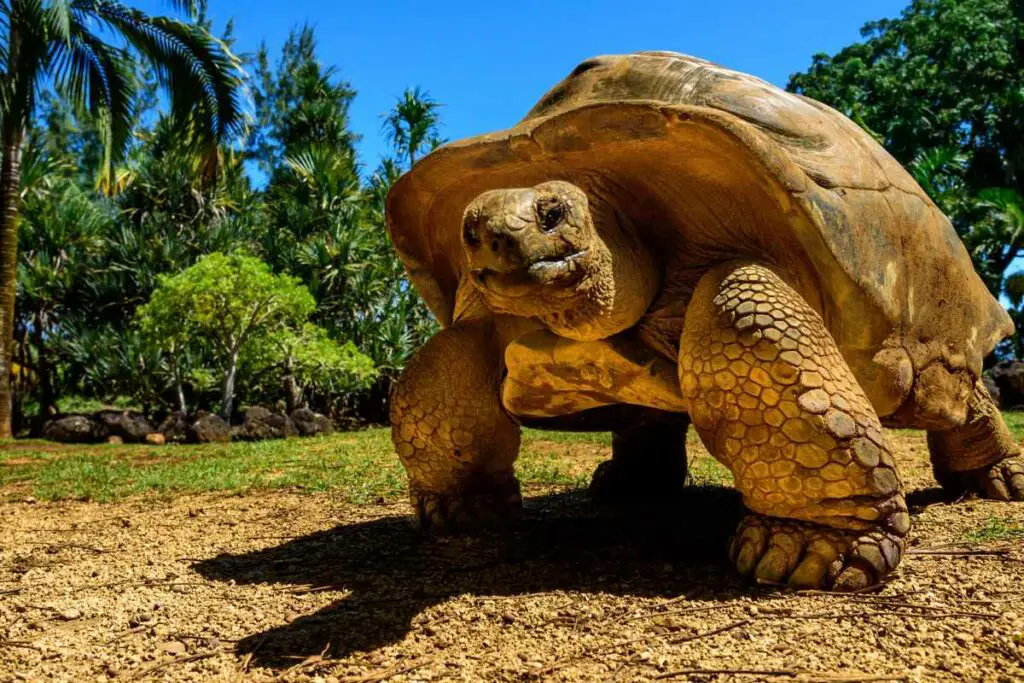
The Galapagos Giant Tortoise is a critically endangered species that is native to the Galapagos Islands in Ecuador. These tortoises are facing extinction due to habitat loss, poaching, and over-exploitation.
The Galapagos Giant Tortoise population has declined by more than 80% over the past 200 years, and it is estimated that there are only 2,000 individuals left in the wild. Conservation efforts are underway to protect these tortoises and their habitats.
Why are these wild animals endangered?
There are several reasons why these wild animals are endangered, including habitat loss, over-exploitation, climate change, and spawning.
What can we do to help protect these endangered species?
There are several things that we can do to help protect these endangered species, including supporting conservation efforts, reducing our carbon footprint, avoiding products that are made from threatened species, and spreading awareness about the importance of wildlife conservation.
Why are these wild animals endangered?
These wild animals are endangered due to a combination of factors including habitat loss, poaching, spawning, and poaching. Some species are also heavily hunted for their valuable body parts, such as rhino horn, ivory, or pelts. Climate change and disease also play a role in their decline.
How can we help protect these endangered wild animals?
There are several ways to help protect these endangered wild animals, including supporting conservation efforts, reducing demand for products made from their body parts, and advocating for sustainable land use practices. Individuals can also donate to organizations working to protect these species and their habitats.
What is the impact of these endangered species on the ecosystem and why is it important to protect them?
Endangered species play a crucial role in maintaining the balance of the ecosystem. The loss of one species can have a ripple effect on other species and the overall health of the ecosystem. By protecting these endangered species, we can maintain the biodiversity of the planet and ensure the long-term health of the environment.
Here’s a list of the Top 25 Most Endangered animals in the world
- Amur Leopard
- Javan Rhinoceros
- Western Lowland Gorilla
- Orangutan
- Snow Leopard
- Asian Elephant
- Sumatran Tiger
- Cross River Gorilla
- Black Rhino
- Bornean Orangutan
- Vaquita
- Mountain Gorilla
- Galapagos Tortoise
- Hawksbill Turtle
- Leatherback Turtle
- Giant Panda
- Siberian Tiger
- African Elephant
- South China Tiger
- Indus River Dolphin
- African Lion
- Chimpanzee
- Bactrian Camel
- Red Panda
- Yangtze Finless Porpoise
Conclusion
In conclusion, it is our responsibility to protect these endangered wild animals and their habitats. The extinction of a single species can have a ripple effect on the entire ecosystem.
By taking action, we can help ensure that these magnificent creatures continue to thrive for generations to come.
So, let’s join hands and discover the top 10 endangered wild animals and take action to protect biodiversity.



